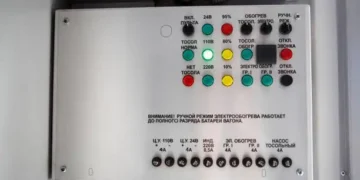
The rigid endoscopes market size is expected to reach US$ 8,829.74 million by 2031 from US$ 5,696.05 million in 2024. The market is estimated to record a CAGR of 6.5% from 2025 to 2031.
When considering application, rigid endoscopes are used for both diagnostic and therapeutic purposes. The therapeutic segment leads due to the prominent role these devices play in surgical interventions. Unlike diagnostic-only tools, therapeutic endoscopes enable real-time treatment, making them integral to procedures across various medical specialties. The growing demand for operative care using endoscopic techniques is significantly contributing to this segment’s dominance.
End users of rigid endoscopes include hospitals, ambulatory surgical centers, specialty clinics, and diagnostic centers. Hospitals represent the largest share of the market, owing to the volume and diversity of procedures performed in these settings. Equipped with advanced technologies and skilled personnel, hospitals are primary consumers of rigid endoscopic systems for both routine and complex interventions. Their infrastructure supports the integration of endoscopic equipment across departments, leading to greater utilization.
Geographically, the rigid endoscopes market is segmented into regions including North America, Europe, Asia Pacific, the Middle East and Africa, and South and Central America. The Asia Pacific region is anticipated to witness the highest growth during the forecast period. Several factors contribute to this trend, including an increase in healthcare spending, expansion of medical facilities, and heightened awareness of advanced treatment options. Countries such as China, India, Japan, and South Korea are at the forefront of this growth, supported by government initiatives aimed at modernizing healthcare infrastructure and expanding access to medical devices. The region’s large population and rising surgical demand are accelerating the need for efficient and reliable tools such as rigid endoscopes.
Executive Summary and Global Market Analysis:
The rigid endoscopes market is growing due to rising demand for minimally invasive surgery. Rigid endoscopes are used in various surgical procedures such as laparoscopy, arthroscopy, urology, gynecology, and ear, nose, and throat (ENT) surgery. Rigid endoscopes with quality cameras and lighting can provide physicians with the clearest and most detailed images possible, improving their ability to perform operations with precision and detail. Patients can expect to benefit from faster recovery time after surgeries, shorter stays in the hospital, and reduced risks of complications. Technological advancement in rigid endoscopes including the latest high-definition (HD) options along with lighting advancements have made rigid endoscopes more effective and easier to use. In addition, with the rising number of surgeries performed, rising elderly population, and a growing awareness of minimally invasive treatment options are driving he growth of the rigid endoscope market.
📚𝐅𝐮𝐥𝐥 𝐑𝐞𝐩𝐨𝐫𝐭 𝐋𝐢𝐧𝐤 @ https://www.businessmarketinsights.com/reports/rigid-endoscopes-market
The Rigid Endoscopes Market is witnessing steady growth due to the increasing demand for minimally invasive surgical procedures, technological advancements, and the growing prevalence of chronic diseases requiring diagnostic and therapeutic interventions. Rigid endoscopes are essential tools in various medical specialties, including gynecology, urology, ENT, orthopedics, and general surgery, due to their ability to provide high-resolution imaging and precise visualization of internal structures. The Rigid Endoscopes Market is expanding as hospitals and clinics increasingly adopt endoscopic techniques to minimize patient recovery time, reduce surgical complications, and enhance procedural accuracy.
One of the major drivers of the Rigid Endoscopes Market is the shift toward minimally invasive surgeries. These procedures offer several benefits over traditional open surgeries, including smaller incisions, shorter hospital stays, faster recovery times, and reduced postoperative pain. As a result, surgeons and healthcare providers are opting for rigid endoscopes to perform procedures with enhanced control and visual clarity. The Rigid Endoscopes Market also benefits from innovations such as 4K and HD imaging, improved light transmission, and integrated camera systems that significantly enhance procedural efficiency and outcomes.
📚 𝐃𝐨𝐰𝐧𝐥𝐨𝐚𝐝 𝐒𝐚𝐦𝐩𝐥𝐞 𝐏𝐃𝐅 𝐂𝐨𝐩𝐲@ https://www.businessmarketinsights.com/sample/BMIPUB00031680
Geographically, the Rigid Endoscopes Market shows strong growth in North America and Europe due to advanced healthcare infrastructure, high healthcare spending, and early adoption of cutting-edge medical technologies. Meanwhile, the Asia-Pacific region presents lucrative opportunities for the Rigid Endoscopes Market due to a growing population, rising awareness of endoscopic procedures, and increasing investment in healthcare infrastructure. Countries such as China, India, and Japan are emerging as key contributors to the regional expansion of the Rigid Endoscopes Market.
The Rigid Endoscopes Market is segmented by product type, application, end-user, and geography. Based on product type, the market includes laparoscopes, arthroscopes, cystoscopes, urology endoscopes, and others. Among these, laparoscopes dominate the Rigid Endoscopes Market due to their widespread application in abdominal and pelvic surgeries. In terms of applications, the Rigid Endoscopes Market encompasses diagnostics and surgeries, with surgeries holding a significant market share due to the growing preference for precision in surgical interventions.
Hospitals, ambulatory surgical centers, and specialty clinics are the key end users in the Rigid Endoscopes Market. Hospitals account for the largest share owing to the availability of advanced infrastructure, skilled professionals, and high patient inflow. The Rigid Endoscopes Market also sees growth in outpatient settings due to the increasing popularity of same-day procedures and improved cost efficiency.
Challenges in the Rigid Endoscopes Market include the high cost of endoscopic equipment and the need for skilled personnel to operate these devices. However, continuous R\&D efforts and increasing training programs are helping overcome these barriers. Furthermore, the Rigid Endoscopes Market is being positively influenced by favorable reimbursement policies, government support, and collaborations between medical device manufacturers and healthcare providers.
In conclusion, the Rigid Endoscopes Market is on a growth trajectory driven by technological innovation, rising surgical demand, and a shift toward minimally invasive procedures. With ongoing developments and increasing global adoption, the Rigid Endoscopes Market is set to play a crucial role in the future of surgical and diagnostic healthcare.
The List of Companies.
Olympus Corporation
Johnson & Johnson
Karl Storz SE & Co. KG
Smith+Nephew
Medtronic
Boston Scientific
- Braun SE
Stryker Corporation
Fujifilm Holdings Corporation
HOYA Corporation
Rigid Endoscopes Market Segmentation Analysis
Key segments that contributed to the derivation of the rigid endoscopes market analysis are product type, portability, technology, application, and end user. By product type, the rigid endoscopes market is segmented into laparoscopes, arthroscopes, uroscopes, gynecology endoscopes, ENT endoscopes, bronchoscope, neuroendoscopes and others. The laparoscopes segment dominated the market in 2024.
High Precision in Orthopedic, and Laparoscopic Procedures
Rigid endoscopes are popular instruments used in orthopedic, ENT (ear, nose, and throat), and laparoscopic surgeries involving the lower abdomen. These rigid devices provide better image stability and much more precision than flexible endoscopes. Rigid endoscopes find importance in orthopedic surgery, especially the arthroscopy procedure.
Rising Adoption in Gynecology
Rigid endoscopes are being used more commonly in the field of gynecology, especially for hysteroscopy and laparoscopic procedures, thus enhancing market growth. Rigid scopes in hysteroscopy yield excellent image quality of the uterine cavity, thus diagnosing and/or treating fibroids, polyps, adhesions, and atypical bleeding can be done with less discomfort from the patient. The rigid nature of scopes with high-definition optics are great for both diagnostic and operative hysteroscopic procedures. While rigid scopes are well accepted by practitioners and patients in a hysteroscopic manner, rigid endoscopes are essential in laparoscopic gynecology as it relates to ovarian cyst excision, endometriosis excision, tubal ligation or sterilization, and many more. Rigid endoscopes provide accurate manipulation of the reproductive organs, as well as access to the reproductive organs via small incisions from the use of endoscopy as compared to traditional surgical techniques.
Rigid Endoscopes Market Size and Share Analysis
By product type, the rigid endoscopes market is segmented into laparoscopes, arthroscopes, uroscopes, gynecology endoscopes, ENT endoscopes, bronchoscope, neuroendoscopes and others. The laparoscopes segment dominated the market in 2024. Laparoscopes are heavily used in general and gynecologic surgeries, offering minimal invasiveness, faster recovery, and reduced hospital stays—making them the most commonly utilized rigid endoscope across healthcare settings.
About Us-
Business Market Insights is a market research platform that provides subscription service for industry and company reports. Our research team has extensive professional expertise in domains such as Electronics & Semiconductor; Aerospace & Defense; Automotive & Transportation; Energy & Power; Healthcare; Manufacturing & Construction; Food & Beverages; Chemicals & Materials; and Technology, Media, & Telecommunications.

























